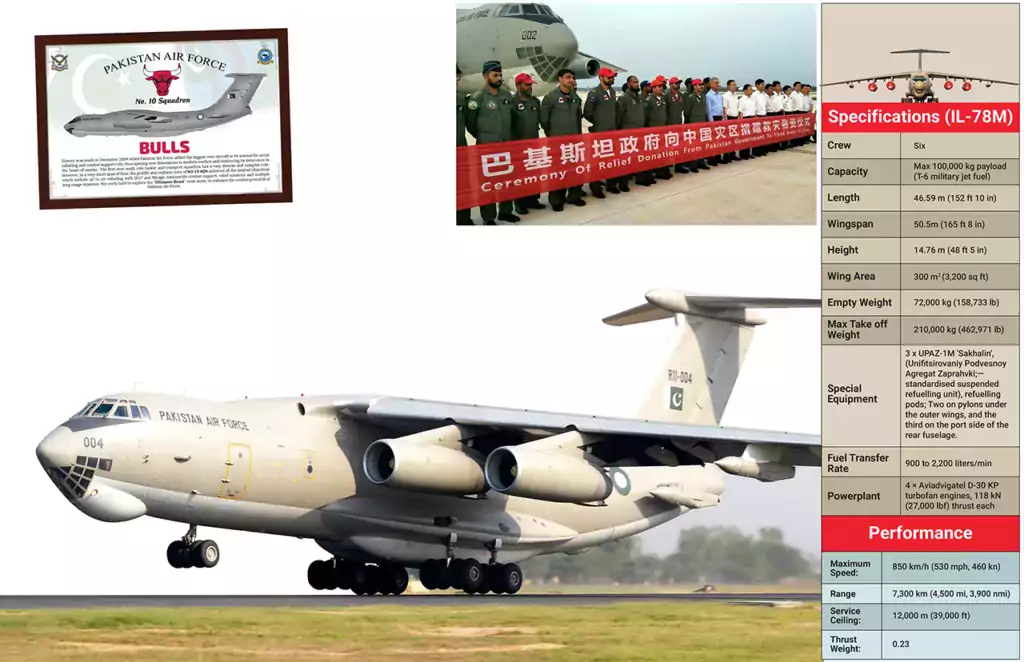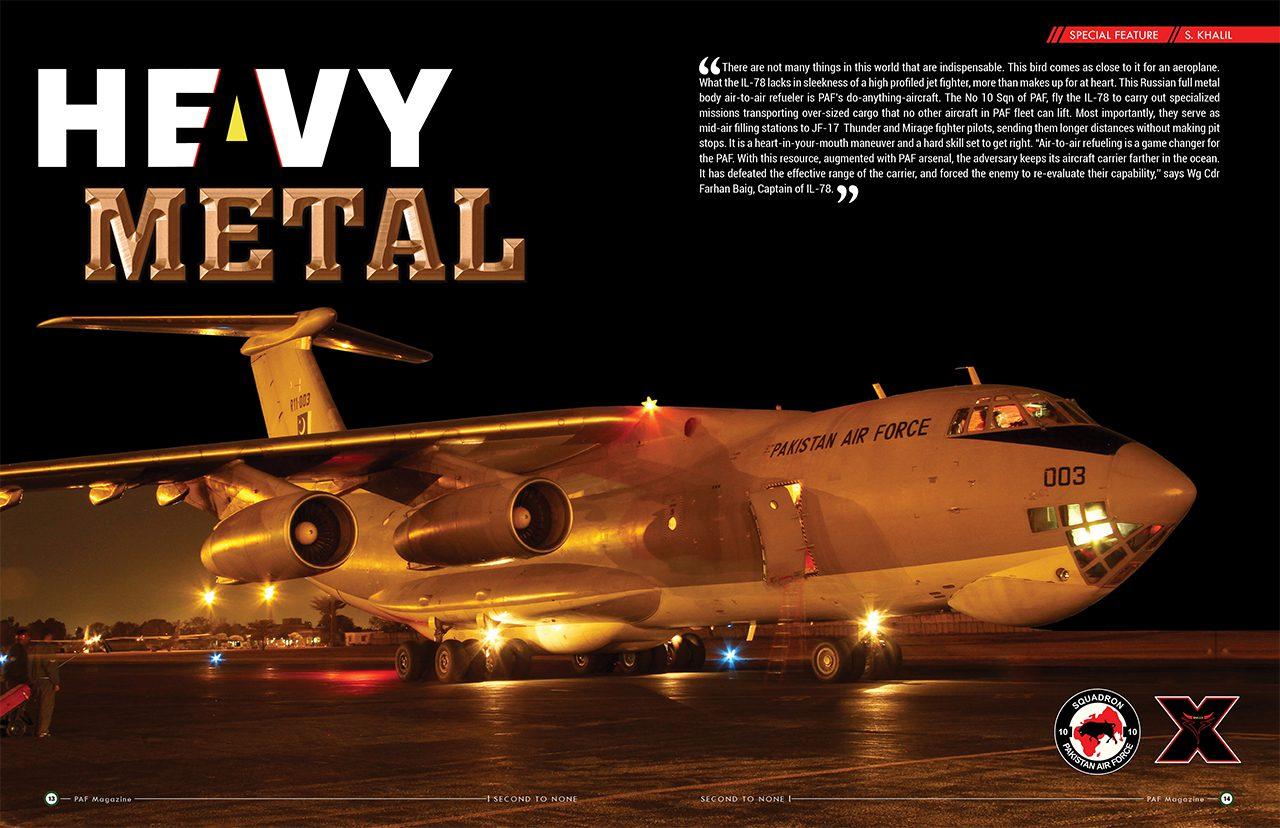There are not many things in this world that are indispensable. This bird comes as close to it for an aeroplane. What the IL-78 lacks in sleekness of a high profiled jet fighter, more than makes up for at heart. This Russian full metal body air-to-air refueler is PAF’s do-anything-aircraft. The No 10 Sqn of PAF, fly the IL-78 to carry out specialized missions transporting over-sized cargo that no other aircraft in PAF fleet can lift. Most importantly, they serve as mid-air filling stations to JF-17 Thunder and Mirage fighter pilots, sending them longer distances without making pit stops. It is a heart-in-your-mouth maneuver and a hard skill set to get right. “Air-to-air refueling is a game changer for the PAF. With this resource, augmented with PAF arsenal, the adversary keeps its aircraft carrier farther in the ocean. It has defeated the effective range of the carrier, and forced the enemy to re-evaluate their capability,” says Wg Cdr Farhan Baig, Captain of IL-78.
Pakistan Air Force may not have bragging rights to the world’s best air-to-air refueler. But its senior leadership places heavy demands on the IL-78 and its crew to become an elite squadron, worthy of serving the PAF. For which, the crew of IL-78 don’t mind rolling up their sleeves.
“Whenever there is an urgent demand, the IL-78 can get airborne within minutes.” adds the Captain of this big bird, standing under its nose at Nur Khan Air Force Base on a hazy morning where constant engine roar hangs over the tarmac.
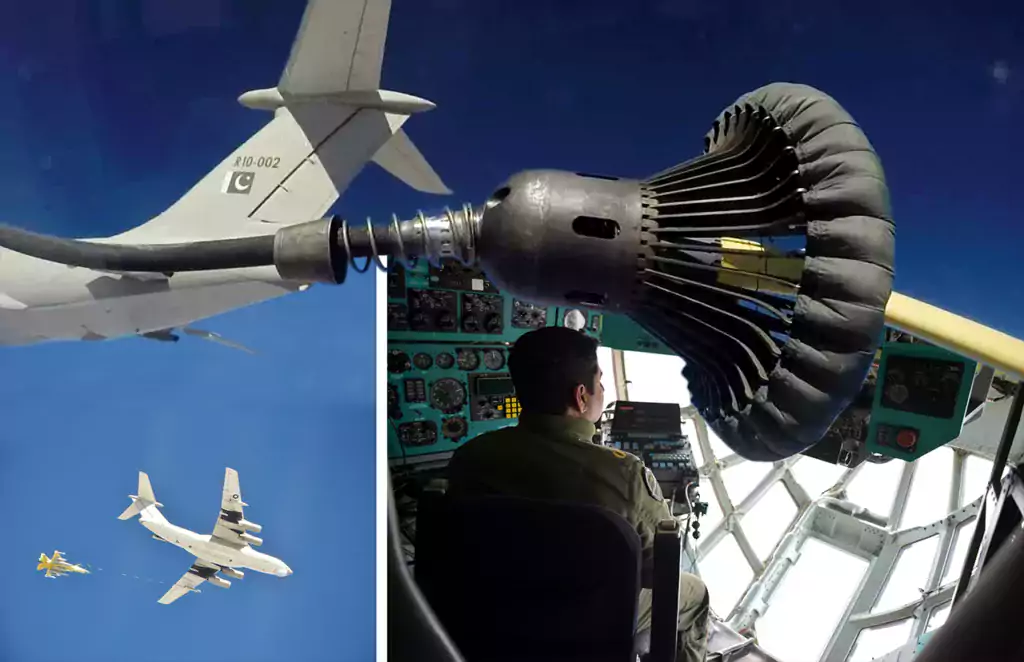
The look of this high-winged tanker is one that stays with you. Wide body, characteristic drooping wings, four jet engines to get the “Big Boys” airborne; heavy duty landing gear, and high mounted tail fin to give it more maneuverability. A sneak peek inside, the two cockpits are packed. Every available inch dedicated to fuel, buttons and switches, and yoke for control. For its defence, it relies on its performance. When it is time to haul the mail, this heavy transport plane can airlift 80, 000 kilograms of awkward payload in its bloated belly.
“This is one of the most reliable planes. We deliver big things you cannot pack in cardboard boxes over long distances in a hurry. This is where we transported a large number of JF-17 Thunder aircraft from China right here,” the commander of the aircraft says gesturing to the fuselage of the aircraft.
The story of IL-78 began in 2005, when adversarial and security environment changed, such that Pakistan Air Force decided to acquire air-to-air refueling capability. To this end, PAF needed a special aircraft. This is where the IL-78 came in, and with it, its specialized expert pilots – and they don’t get any better than the guys in the No 10 Squadron. This unit is dedicated to this highly important task.
Induction of IL-78 changed the direction of war as a force multiplier, says Wg Cdr Farhan Baig, the current squadron commander of No 10 Sqn.
“An air-to-air refueled aircraft can hold and secure a location for an additional hours, provided it doesn’t run out of ammo,” he adds.
But in-flight tanking, using the drogue and probe method to keep fighters front-line ready, is one of the riskiest aircraft ops. There is no room for error and safety checks are doubly important. This was evident when PAF performed the first ever air to air refueling of the newly inducted JF-17 B (dual seat) model.
The IL-78 navigated to given coordinates and rendezvoused with test pilot Flt Lt Wajihullah of No 14 Sqn, in the new dual seat. Both aircraft flying at twice the speed of a Formula One race car flat out, wajihullah of assumed pre-contact position under the left wing of the refueler.
“Mid-air tanking is one of the trickiest and most dangerous maneuvers any fighter pilot has to master,” says Wajiullah. At 500 kph, he has to line up his jet and probe with the hose swirling from the wing of the refueler. During all his previous training sessions, he was hardwired to stay off the collision course, by maintaining a 1,000 feet distance from the other aircraft. However, that day he had to pull up 20 meters behind the tanker plane using reference points on IL-78. “It’s against a pilot’s instincts,” he declares now relying more on visual flight rules (VFR).
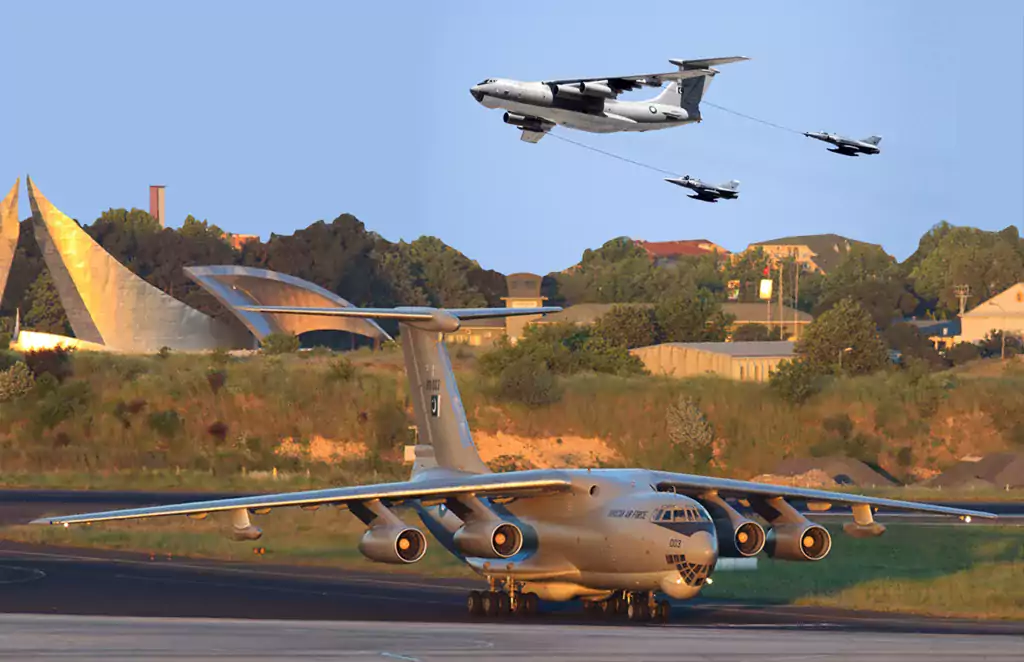
The hose looks like a shuttlecock. Despite the skirt design at its end to keep the drogue steady, bow air in front of JF-17 B pushes the hose up and away. “It was like threading a needle in a car on a bumpy road.” Get it wrong, and the hose can smack in the side of the aircraft and damage it, compromising the mission, forcing the pilot to land.
At a 5 kph rate of closure, the jet inches towards the hose and docks. It is pure piloting technique and anticipation. Once locked in, the IL-78 transfers staggering amounts of fuel within a matter of minutes – a 1, 000 pounds per minute to be precise. Wajiullah set the bar for the optimal way of refueling the new JF-17 B model.
Many air ops would be impossible without air-to-air refueling technology. That day before the crew of IL-78 rendezvoused with the Thunder, it had another mission – 12 fuel-hungry jets, flying in three formations needed refueling.
“A Mirage burns several litres every kilometer. It can cover a mile in the blink of an eye. Jets are so weighed down with bombs, they require copious amounts of fuel just getting off the ground,” points out Wg Cdr Shaheer Shahid from the No 7 “Bandit” Sqn.
The IL-78 pumps several thousands of pounds of fuel into the Mirages two at a time in minutes, faster than a normal petrol station does in 24 hours and the pilots continue patrolling the borders.
With this capability, even deep air bases in enemy territory are within range. Jets can be refueled in-flight, penetrate, strike, return, get refueled again and land home safely, thanks to the ‘range extenders’. The IL-78 is considered one of the most vital weapons in the arsenal of PAF.
The No 10 sqn also serves as PAF’s war times transport unit. The air force has four IL-78 and they are kept busy doing a tonne of other things including carrying paratroopers and assisting the Pakistan Navy, in joint exercises.
“It’s not a typical IL-78 aircraft, which is solely dedicated for air-to-air refueling but a modified version to airlift cargo. The deployment time has been reduced to half, as was the case during Operation Swift Retort-2019 adds Wg Cdr Farhan Baig.
IL-78- The Bird Itself
The IL-78’s amazing size makes you wonder just how big things can get. It also makes you think that something that enormous isn’t supposed to get off the ground. But its multiple crews fly it every day and it is just amazing, especially when it does not uphold the reputation as a sweet handling airplane. Getting on and off the ground requires definitive skills that set apart the pilots of No 10 Sqn from all others – the reason is its obvious size.
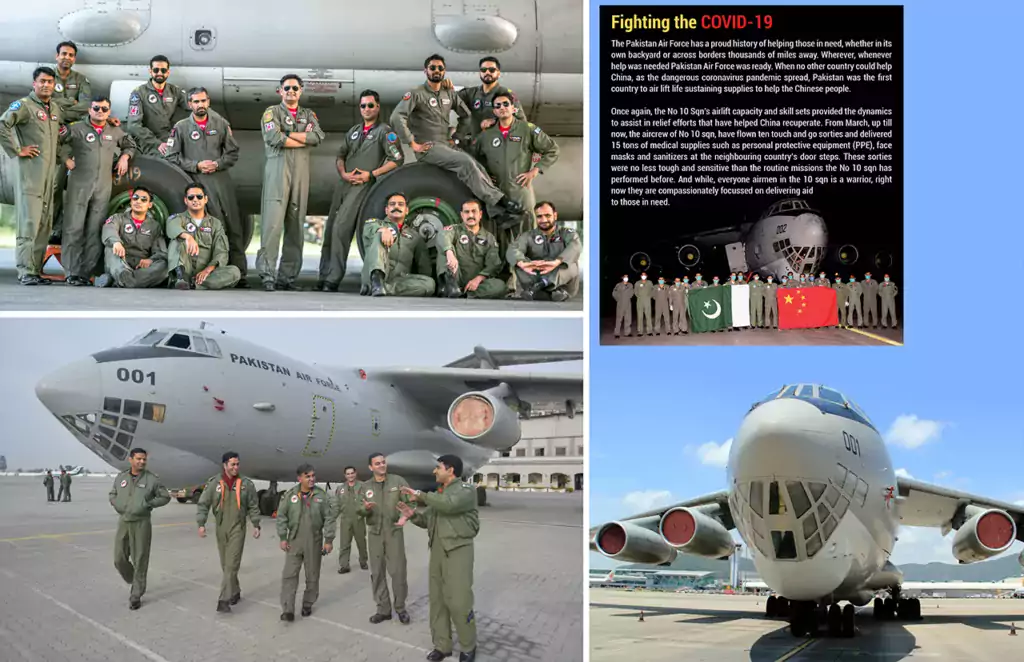
It takes a lot of focus and preparedness. It wakes you up and gets adrenaline pumping. To say that its crew takes a beating is putting it mildly “As we say in the air force, just landing this beast is synonymous with taming a bull in a rodeo. Thrust reversers go on full blast, sound deafening, and there’s rubber coming from tyres,” Farhan Baig observes.
Its crew describes the IL-78 as a very manual plane, role responsive to inputs. “Conventional aircraft including C-130, which pilots learn to fly with one hand on the sensitive stick or a yoke and the other on power functions. But controls of IL-78 are so heavy that we need a separate crew member with hands on the throttle. You cannot fly hands off.
That is manhandling the plane. It is not very forgiving,” Farhan Baig said.
No 10 Sqn was formed on December 11, 2009. To fly IL-78 a pilot requires no less than 52 hours of ground studies, besides the four weeks of simulation flying. Farhan Baig was among the pioneering group of three crew members who were trained to fly the IL-78 after 37 hours of ground studies including simulation flying.
“Worse – our Ukrainian instructors did not even speak English,” he quips. With 1, 600 flying hours as Captain of a C-130 Hercules, Farhan Baig joined the No 10 Sqn as co-pilot.
The IL-78 is the only heavy category aircraft in the PAF fleet. Besides refueling two jets in-flight simultaneously, it airlifts 2.5 times more cargo than a C-130 Hercules. Flying IL-78 has been a rich experience for pilots. A C-130 captain comes as a co-pilot on IL-78. The experience level is extremely high in this squadron.
The downside is that the IL-78 is an old aircraft from the 70s – manual and analogue. It gives very little chance for recovery. Every mission is challenging and you cannot lower the guard at any time. Yet the tanker crew is more keenly aware than any other of the tremendous responsibilities of their missions. They are proud of their achievements.
“We have the opportunity to serve fighter pilots – the finest source of pride in our careers. We are the first to go in and the last to come out,” said Wg Cdr Farhan Baig.
